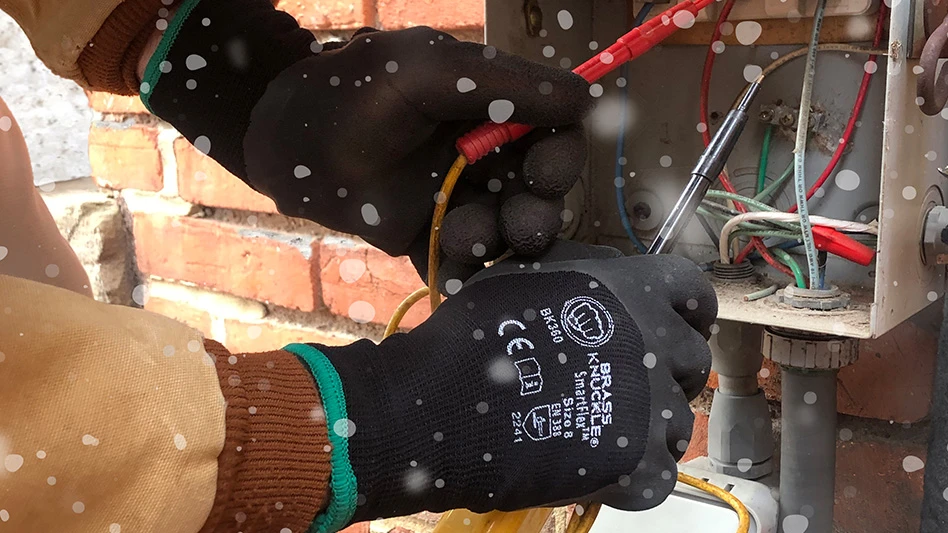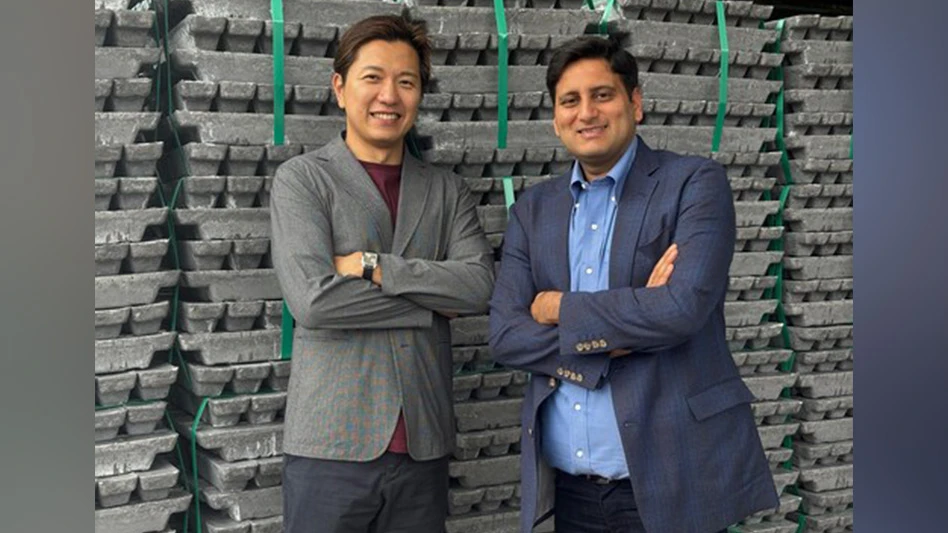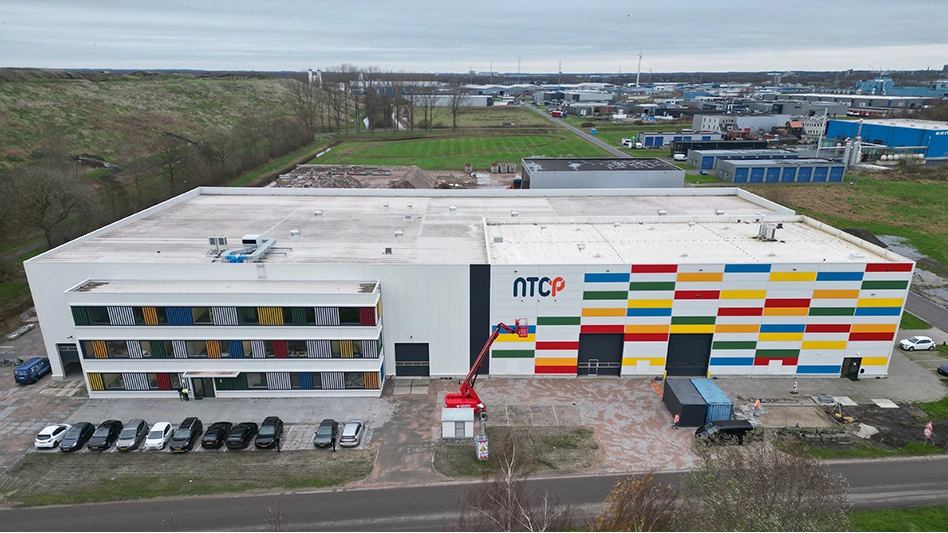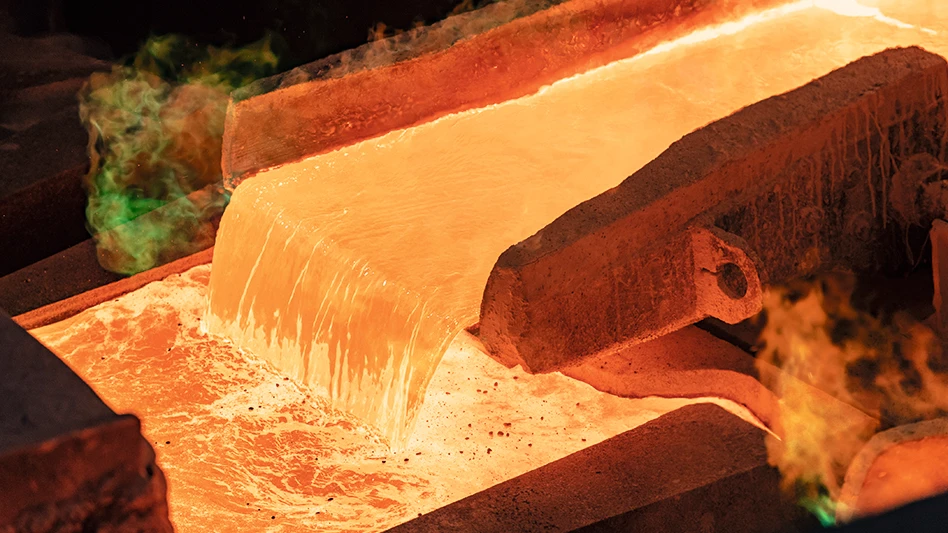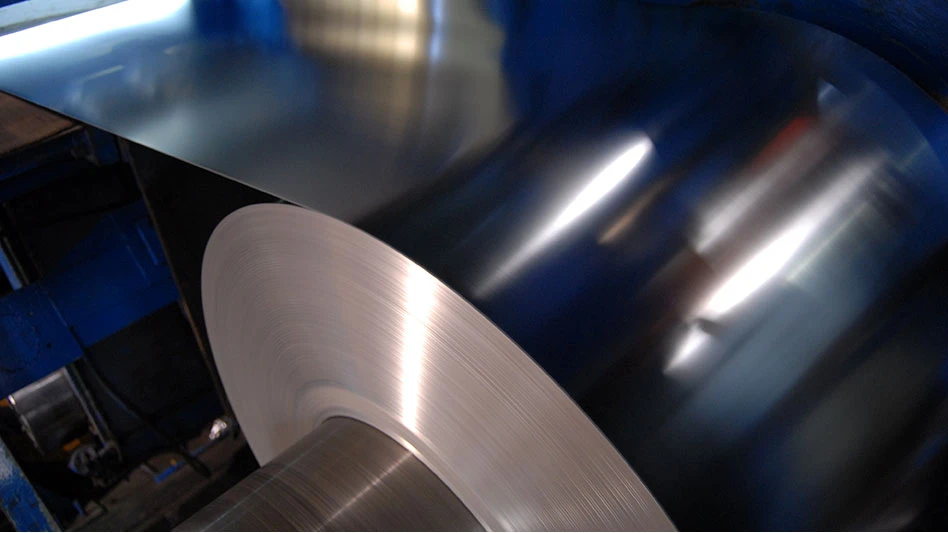
Photo courtesy of Liebherr
The challenges encountered by scrap processors to keep material moving in and out of their yards, as well as to processing points within those yards, never seem to diminish.
The ongoing set of challenges has created opportunities for scrap recyclers to work closely with providers of mobile material handling equipment to add features or otherwise modify machinery not just to solve problems but also to improve productivity.
In Europe this year, a machine made by Liebherr with extended reach has proved helpful to one recycler, while another processing firm was eager to pilot a Sennebogen hybrid-powered unit in its quest to lower its carbon footprint.
Striving for more in France
Scrap handler manufacturer Liebherr says Gennevilliers, France-based Mazeau Recyclage took delivery of a new Liebherr LH 80 M High Rise material handler to improve productivity and reduce vessel loading times.
Mazeau already was operating a Liebherr A 944 C HD High Rise Litronic handling machine when it brought in the new LH 80 M High Rise. The scrap company had been familiar with Liebherr equipment dating back to 1998.
Liebherr says the LH 80 M High Rise meets applicable low engine emissions requirements and has an operating weight of more than 90 metric tons. The material handler can produce an engine with 313 horsepower.
Lifting capacity of 5.5 metric tons enhances the productivity of the unit, says Liebherr, to go along with its reach. That reach of 21.5 meters (more than 70 feet) is 1.5 meters (20 percent) longer than that of the A 944 C HD High Rise delivered to Mazeau Recyclage in 2008. That machine has racked up nearly 18,000 operating hours to date, notes Liebherr.
When it comes to loading vessels, the LH 80’s hydraulic elevation allows a maximum viewing height of up to 9.8 meters (32 feet), offering helpful visibility conditions and flexibility in adapting to different waterfront loading situations, Liebherr says.
According to the manufacturer, a patented energy recovery system on the machine’s boom cylinders, combined with “a new, simpler engine,” provides cost-effectiveness. “It produces more power while at the same time achieving up to 35 percent lower fuel consumption than its predecessor,” the company states.
Low-carbon ideals in the UK
Basic materials producers and manufacturers of all sorts have been seeking to lower their carbon footprints, and United Kingdom-based EMR Ltd. is taking the same approach as a scrap supplier.
The company’s decarbonization plan involves several different aspects and approaches, and a hybrid material handler designed by Sennebogen has fit right in.
In an October personnel profile piece prepared by EMR, Scott Bamborough the company’s general manager for Liverpool, U.K., operations, says an EMR yard in that region served as the site of the trial run for a new Sennebogen 895e hybrid material handler.
That machine is part of Sennebogen’s new G Series models, which feature an energy recovery system and are available in electric-powered versions. The electricity-powered models “can also reduce operating costs by up to 50 percent, [while] the environmentally friendly, emission-free electric motor offers low-noise and vibration-free operation even in the most demanding of situations,” according to Sennebogen.
At EMR, Bamborough says the Sennebogen hybrid was put to work at its Alexandra site, where EMR operates its largest metal shredder – a 10,000-horsepower machine with the capability to process more than 400 metric tons per hour. The yard also has “a dock facility that allows us to export scrap metal to markets anywhere in the world,” Bamborough says.
The 400-metric-ton Sennebogen 895e “dwarfs EMR’s existing material handling and ship loading equipment,” according to EMR. And, as EMR prepares to hit net-zero by 2040, it can move material without the use of fossil fuels, the company adds.
“It’s part of a new generation of loading equipment that meets the hybrid specifications that EMR’s long-term sustainability strategy demands,” Bamborough says.
The use of such machines by EMR is likely to increase, Ian Sheppard, the firm’s managing director of metal recycling, says. In an overview of EMR’s overall decarbonization effort, Sheppard says the plan includes switching to 100 percent renewable electricity, changes to how the company works and introducing new technologies to further cut EMR’s emissions.
As businesses up and down the United Kingdom supply chain work to hit carbon reduction targets, they will also rely on companies such as EMR to provide decarbonized recycling services to help them achieve their own goals, Sheppard says.
EMR and other scrap processing firms, in turn, will likely rely on providers of low-emissions material handling equipment to help them offer that “decarbonized recycling.”
Latest from Recycling Today
- AISI, Aluminum Association cite USMCA triangular trading concerns
- Nucor names new president
- DOE rare earths funding is open to recyclers
- Design for Recycling Resolution introduced
- PetStar PET recycling plant expands
- Iron Bull addresses scrap handling needs with custom hoppers
- REgroup, CP Group to build advanced MRF in Nova Scotia
- Oregon county expands options for hard-to-recycling items

